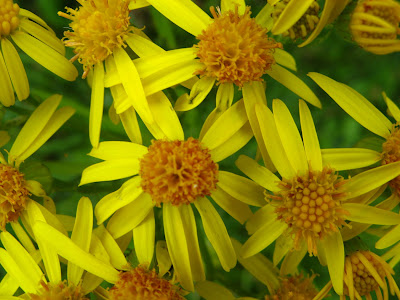
I'm back from Yorkshire! Thank goodness, it was quite chilly up there indeed! I thought i'd start with a photo of a grass for my first post back.
I never really took the time to stop and look at grasses. I certainly never considered that they have flowers. Being wind pollinated they don't need to be showy with big petals but their flowers can still be quite beautiful when examined close up. I thought posting Yorkshire fog would be apt seeing as how i've been visiting there for the past week. Yorkshire fog is one of my favourite grasses. It's quite easy to spot because its leaves are really soft and hairy and if you look at the base of the stem it usually has purple stripes or veins running vertically. They remind me of stripy pajama bottoms. The flower head also has a rather pleasant purplish tinge. It's definately going on the list of my top ten grasses of all time!

















































